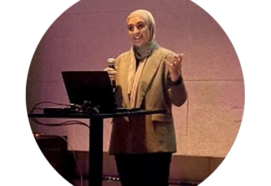Leading up to our webinar series ‘Intervention and prevention of the sexual abuse of children and young people and those displaying harmful sexual behaviour. Mandatory Reporting – What’s next?’ we take a look at some evidence-based approaches.
Sexual abuse of children and young people is a pervasive issue with far-reaching consequences, affecting victims’ mental, emotional, and physical well-being. Equally concerning is the harmful sexual behavior (HSB) exhibited by some young people, which requires targeted interventions to prevent further harm. Effective strategies for intervention and prevention are crucial in addressing both victimization and offending behaviours. This blog explores evidence-based approaches to prevent and intervene in cases of sexual abuse and harmful sexual behavior among children and young people.
Understanding the Scope of the Problem
Sexual abuse of children is a global issue. According to the World Health Organization (WHO), approximately 1 in 5 women and 1 in 13 men report having been sexually abused as children. The impact of such abuse includes increased risks of mental health disorders, such as depression, anxiety, and post-traumatic stress disorder (PTSD), along with difficulties in relationships and overall social functioning.
 The impact of such abuse includes increased risks of mental health disorders
The impact of such abuse includes increased risks of mental health disorders
Evidence-Based Interventions for Victims
- Trauma-Focused Cognitive Behavioural Therapy (TF-CBT): TF-CBT is a well-researched therapeutic approach specifically designed for children and adolescents who have experienced trauma. Research indicates that TF-CBT effectively reduces PTSD symptoms, depression, and behavioural problems while improving coping skills and emotional regulation (Cohen, Mannarino, & Deblinger, 2017).
- Eye Movement Desensitization and Reprocessing (EMDR): EMDR therapy involves patients recalling traumatic events while engaging in bilateral sensory input, such as side-to-side eye movements. This therapy has shown success in alleviating trauma symptoms and is supported by evidence as an effective treatment for children and adolescents who have experienced sexual abuse (Shapiro, 2018).
- Multisystemic Therapy (MST): MST is an intensive, home-based therapy that addresses the various systems impacting the child, such as family, peers, school, and community. Studies have shown that MST is effective in reducing symptoms of trauma and improving overall functioning, particularly in adolescents with severe behavioural issues, including HSB (Henggeler et al., 2009).
Prevention Strategies
- Comprehensive Sexual Education: Comprehensive sexual education programs are crucial in teaching children about body autonomy, consent, and recognizing inappropriate behavior. Evidence shows that such programs can reduce instances of abuse and increase the likelihood of children reporting inappropriate behavior. For example, the “Good Touch, Bad Touch” curriculum has been effective in educating children about personal safety (Finkelhor, 2009).
- Parent and Caregiver Training: Educating parents and caregivers about the signs of abuse, appropriate supervision, and effective communication is essential. Programs like “Darkness to Light” empower adults to prevent, recognize, and respond responsibly to child sexual abuse, enhancing protective measures within the home environment (Saul & Audage, 2007).
- Community-Based Programs: Creating safe community spaces and providing supervised activities can reduce the risk of abuse. Community centres, after-school programs, and youth organizations play a critical role in offering safe environments for children. These programs also foster trust and provide additional layers of protection against abuse (Smallbone, Marshall, & Wortley, 2008).
 The “Good Touch, Bad Touch” curriculum has been effective in educating children about personal safety
The “Good Touch, Bad Touch” curriculum has been effective in educating children about personal safety
Addressing Harmful Sexual Behavior
Children and young people displaying harmful sexual behavior require specialized interventions to prevent future incidents and promote rehabilitation.
- Specialized Therapeutic Programs: Programs designed for young people with HSB focus on understanding the root causes and developing appropriate social and sexual behaviours. Cognitive-behavioural interventions that address thought patterns and behaviours have been shown to reduce HSB effectively (Carpentier, Silovsky, & Chaffin, 2006).
- Family-Based Interventions: Involving the family in treatment processes is crucial. Functional Family Therapy (FFT), which focuses on enhancing family communication, reducing conflict, and building supportive dynamics, has shown effectiveness in addressing HSB (Alexander et al., 2000).
- Restorative Justice Approaches: Restorative justice involves facilitated meetings between the victim and the offender to discuss the impact of the behavior and agree on steps to make amends. These approaches help victims find closure and promote accountability and rehabilitation for the offender. Programs incorporating victim-offender mediation have shown promise in reducing recidivism and fostering positive behavioural changes (Umbreit, Vos, & Coates, 2006).
The Role of Mandatory Reporting
Mandatory reporting laws require certain professionals, such as teachers, healthcare workers, and social workers, to report suspected cases of child abuse to authorities. These laws are critical in ensuring timely intervention and protection for at-risk children. However, the effectiveness of mandatory reporting systems depends on proper implementation and support.
- Training for Mandatory Reporters: Comprehensive training for professionals on recognizing signs of abuse, understanding their legal obligations, and handling disclosures sensitively is vital. Well-trained reporters are more likely to make accurate reports, ensuring children receive the protection they need (Kenny, 2001).
- Streamlined Reporting Processes: Simplifying the reporting process through online systems, hotlines, and clear guidelines can improve compliance and effectiveness. Streamlined processes encourage more timely and accurate reporting (Mathews & Bross, 2008).
- Legal and Institutional Support: Providing legal protections for reporters and addressing concerns about confidentiality and potential repercussions can mitigate barriers to reporting. Support systems within institutions, such as dedicated child protection officers, can also enhance the effectiveness of mandatory reporting (Mathews, Bromfield, & Walsh, 2020).
Moving Forward
Addressing the sexual abuse of children and young people, and managing harmful sexual behavior, requires a comprehensive, evidence-based approach. Prevention and intervention strategies must be multifaceted, involving education, family and community support, therapeutic interventions, and robust reporting systems.
- Integrated Data Systems: Developing integrated data systems that allow for real-time sharing of information between agencies can improve coordination and response times. Such systems ensure that children at risk are identified and supported promptly (Gilbert et al., 2009).
- Use of Technology: Leveraging technology, such as mobile apps for reporting and artificial intelligence to analyse data patterns, can enhance the efficiency and accuracy of reporting. Technological advancements can also support the development of innovative intervention programs (Munro, 2011).
- Policy Reforms: Continuous evaluation and reform of mandatory reporting policies are necessary to address emerging challenges and incorporate best practices. Policymakers should consider feedback from frontline workers and survivors to ensure the system is responsive and effective (Bromfield & Holzer, 2008).
- International Collaboration: Sharing knowledge and strategies across borders can improve global responses to child sexual abuse. Collaborative efforts can lead to the development of standardized protocols and best practices, enhancing the effectiveness of interventions worldwide (Mathews et al., 2015).
 Prevention and intervention strategies must be multifaceted
Prevention and intervention strategies must be multifaceted
Conclusion
Intervention and prevention of the sexual abuse of children and young people require a comprehensive, evidence-based approach that encompasses therapeutic interventions, preventive education, and robust reporting systems. By addressing the challenges in mandatory reporting and embracing innovative solutions, we can better protect children and young people from sexual abuse and support those affected by it. The future of child protection lies in our collective commitment to continuous improvement and collaboration.
Where next?
ACAMH are running a series of 4 two-hour seminars starting September, from a total cost of just £40. The series ‘Intervention and prevention of the sexual abuse of children and young people and those displaying harmful sexual behaviour. Mandatory Reporting – What’s next?’ will present current approaches to working with children and young people who have been sexually abused and those responsible for sexually harmful behaviour, and approaches to prevention.
The sessions will focus on;
- Sexual abuse across services. Dr. Arnon Bentovim, Child and Family Training, will present an overview of current forms of sexual abuse, changing definitions including the way Technology has created new forms of sexual abuse, and an appreciation of the traumatic impact of sexual abuse and the overlapping co-morbid mental health impacts – introducing a Modular approach to intervention
- Messages from the SWAAY Community and Residential services. Rachel Edwards and Rachel Kershawwill present an overview of the intervention needs of young people with complex needs responsible for harmful sexual behaviour, the need for an integrated approach, and effective treatment models.
- Creating safer environments for children and young people: some insights from theory and practice. Tom Squire from the Faithfull Foundation, will outline a comprehensive framework for the prevention of child sexual abuse, and how this is applied to the Faithfull Foundation prevention strategies, and the development of safeguarding cultures.
- Growing concerns about TACSA – Tech-Assisted Child Sexual Abuse. Victoria Green and Lawrence Jordanfrom the Marie Collins Foundation, will present how children are abused through technology, the differential impacts on children and young people, barriers to telling, and how best to respond without causing further harm.
Delegates will have exclusive access to recordings for 90 days after the event, together with slides. Plus you will get a personalised CPD certificate via email.
Don’t forget as a charity any surplus made is reinvested back as we work to our vision of ‘Sharing best evidence, improving practice’, and our mission to ‘Improve the mental health and wellbeing of young people aged 0-25’.
References
This blog has been peer-reviewed.
- Alexander, J. F., Waldron, H. B., Robbins, M. S., & Neeb, A. A. (2000). Functional Family Therapy for Adolescent Behavior Problems. Washington, DC: American Psychological Association.
- Bromfield, L., & Holzer, P. (2008). A national approach for child protection: Project report. Melbourne: Australian Institute of Family Studies.
- Carpentier, M. Y., Silovsky, J. F., & Chaffin, M. (2006). Randomized trial of treatment for children with sexual behavior problems: Ten-year follow-up. Journal of Consulting and Clinical Psychology, 74(3), 482-488.
- Cohen, J. A., Mannarino, A. P., & Deblinger, E. (2017). Trauma-Focused CBT for Children and Adolescents: Treatment Applications. New York: Guilford Press.
- Finkelhor, D. (2009). The prevention of childhood sexual abuse. Future of Children, 19(2), 169-194.
- Gilbert, R., Spatz Widom, C., Browne, K., Fergusson, D., Webb, E., & Janson, S. (2009). Burden and consequences of child maltreatment in high-income countries. The Lancet, 373(9657), 68-81.
- Henggeler, S. W., Schoenwald, S. K., Borduin, C. M., Rowland, M. D., & Cunningham, P. B. (2009). Multisystemic Therapy for Antisocial Behavior in Children and Adolescents. New York: Guilford Press.
- Kenny, M. C. (2001). Child abuse reporting: Teachers’ perceived deterrents. Child Abuse & Neglect, 25(1), 81-92.
- Mathews, B., Bromfield, L., & Walsh, K. (2020). Teachers’ mandatory reporting of child sexual abuse: A synthesis of the literature. Child Abuse Review, 29(1), 5-18.
- Mathews, B., & Bross, D. C. (2008). Mandated reporting is still a policy with reason: Empirical evidence and philosophical grounds. Child Abuse & Neglect, 32(5), 511-516.
- Munro, E. (2011). The Munro Review of Child Protection: Final Report. A Child-Centred System. London: Department for Education.
- Saul, J., & Audage, N. C. (2007). Preventing child sexual abuse within youth-serving organizations: Getting started on policies and procedures. Atlanta, GA: Centers for Disease Control and Prevention.
- Shapiro, F. (2018). Eye Movement Desensitization and Reprocessing (EMDR) Therapy, Third Edition: Basic Principles, Protocols, and Procedures. New York: Guilford Press.
- Smallbone, S., Marshall, W. L., & Wortley, R. (2008). Preventing Child Sexual Abuse: Evidence, Policy and Practice. Cullompton: Willan.
- Umbreit, M. S., Vos, B., & Coates, R. B. (2006). Restorative Justice Dialogue: Evidence-Based Practice. Washington, DC: American Psychological Association.



Discussion
Very interesting but what about using creative therapy such as play as the voice of the young child It is a very affective way to co.municate what is happening to them instead of talking